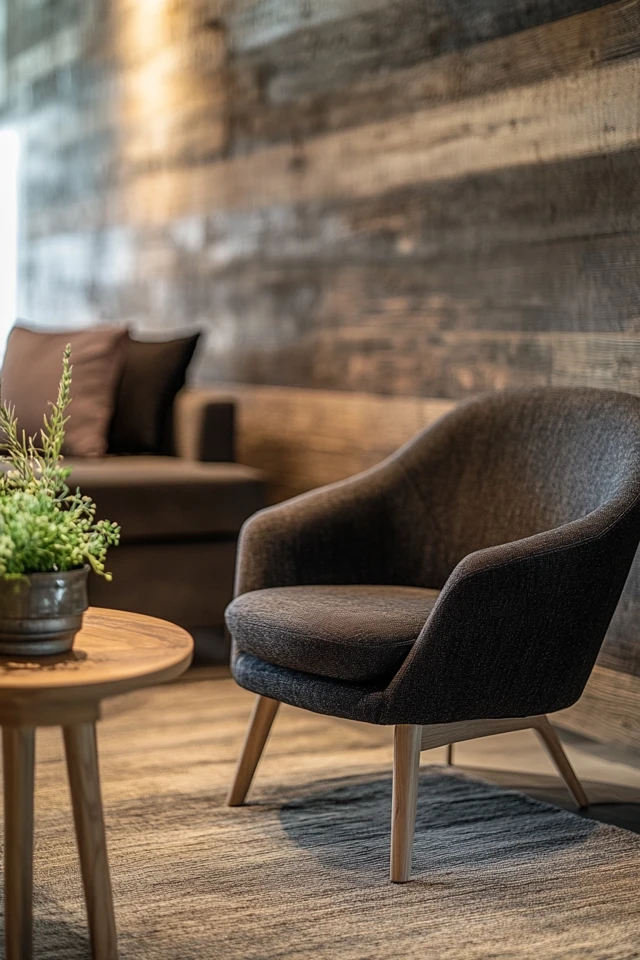Combining minimalist and rustic styles may sound like a design paradox—one thrives on simplicity and clean lines, while the other embraces warmth and natural textures. But when these two aesthetics are blended thoughtfully, the result is a harmonious, cozy, and effortlessly chic space that offers the best of both worlds.
The first time I tried blending these styles, I was designing a guest bedroom for a cabin-inspired home. I paired sleek, white bedding with a reclaimed wood headboard, added a black metal reading lamp, and placed a textured jute rug beneath a simple bench. It felt modern and functional but retained that rustic charm that makes you want to curl up with a cup of tea.
If you’re intrigued by the idea of merging minimalist and rustic styles, here are my top tips to create a balanced, inviting space that’s both streamlined and full of character.
Why Minimalist and Rustic Styles Work Together
- Balance: Minimalism’s clean lines complement the organic textures of rustic decor, creating a perfect blend of sleek and cozy.
- Timeless Appeal: Both styles focus on lasting design principles, avoiding trendy, short-lived elements.
- Versatility: The combination works in a variety of spaces, from urban apartments to countryside retreats.
- Comfort Meets Simplicity: Rustic adds warmth, while minimalism keeps the design uncluttered.
1. Start With a Neutral Color Palette
Why It Works:
A neutral palette is the foundation of both minimalist and rustic design, allowing textures and natural materials to take center stage.
How to Do It:
- Use a base of whites, creams, grays, and earthy tones like beige, taupe, and soft browns.
- Avoid overly bright or bold colors, which can disrupt the calm, harmonious feel.
- Add depth with darker accents like charcoal, deep green, or matte black for contrast.
Pro Tip: Stick to muted, natural shades for a cohesive look that blends both styles seamlessly.
2. Incorporate Natural Materials
Why It Works:
Rustic design thrives on natural elements, while minimalism’s love of simplicity ensures these materials shine without competition.
How to Do It:
- Use reclaimed wood for furniture or architectural details like beams or shelves.
- Incorporate stone, concrete, or brick for textural variety.
- Add woven accents like jute rugs, wicker baskets, or rattan chairs.
Pro Tip: Combine different textures—like a sleek marble countertop with a wooden stool—for a layered, balanced aesthetic.
3. Choose Simple, Functional Furniture
Why It Works:
Minimalism emphasizes functionality and clean lines, which pairs well with the sturdy, timeless quality of rustic furniture.
How to Do It:
- Look for mid-century-inspired pieces with wooden finishes for a rustic-meets-modern vibe.
- Use benches or tables with natural wood grain and simple silhouettes.
- Mix metal-framed furniture with natural wood for an industrial-rustic touch.
Pro Tip: Keep furniture minimal—choose fewer, high-quality pieces that make a statement without overwhelming the room.
4. Layer Textures for Warmth
Why It Works:
Minimalist spaces can sometimes feel too stark, but rustic textures add warmth and coziness without disrupting the clean aesthetic.
How to Do It:
- Add a chunky knit throw or faux fur blanket to a minimalist sofa.
- Use linen or wool curtains for a soft, natural touch.
- Layer rugs—place a neutral jute rug beneath a smaller patterned or textured one.
Pro Tip: Stick to a consistent color palette to ensure the textures don’t feel overwhelming.
5. Use Statement Lighting
Why It Works:
Lighting can act as a functional focal point, blending minimalist and rustic elements in a single piece.
How to Do It:
- Choose fixtures with clean, simple lines in materials like matte black metal, brass, or wood.
- Consider pendant lights with an industrial or farmhouse vibe.
- Use wall sconces or table lamps with linen or burlap shades for a rustic touch.
Pro Tip: Ensure lighting is warm and diffused to complement the cozy, rustic atmosphere.
6. Focus on Functional Decor
Why It Works:
Minimalism discourages excess, while rustic style celebrates functional, meaningful items.
How to Do It:
- Decorate with items that serve a purpose, like woven baskets, wooden trays, or ceramic vases.
- Display a stack of books or a bowl of fresh fruit for a casual, lived-in look.
- Hang simple artwork, like black-and-white photography or abstract prints, in clean-lined frames.
Pro Tip: Use greenery—like a fiddle leaf fig or a cluster of dried branches—to add life without cluttering the space.
7. Highlight Architectural Features
Why It Works:
Exposed beams, brick walls, or shiplap are hallmarks of rustic design, and minimalism’s pared-down approach allows these elements to shine.
How to Do It:
- Showcase existing features like stone fireplaces or reclaimed wood beams.
- If your space lacks natural rustic charm, add a feature wall with shiplap or peel-and-stick wood paneling.
- Keep the rest of the room simple to let these features take center stage.
Pro Tip: Use natural finishes—avoid painting over wood or brick unless necessary.
8. Add Subtle Patterns
Why It Works:
Minimalist design rarely incorporates bold patterns, but subtle, rustic-inspired ones can add depth and interest.
How to Do It:
- Use striped or checkered throw pillows in muted tones.
- Incorporate a vintage-inspired rug with a faded, understated pattern.
- Add subtle geometric patterns through textiles like bedding or curtains.
Pro Tip: Stick to one or two patterns per room to maintain the minimalist feel.
9. Balance Clutter With Charm
Why It Works:
Minimalism’s clean surfaces and rustic design’s cozy details can coexist if you find the right balance.
How to Do It:
- Avoid over-accessorizing—choose a few impactful decor pieces rather than filling every surface.
- Keep countertops clear except for one or two rustic accents, like a wooden bowl or ceramic pitcher.
- Store items in woven baskets or hidden storage to maintain a clean look.
Pro Tip: Remember, less is more. Focus on quality over quantity when adding rustic charm.
10. Blend Metal and Wood Accents
Why It Works:
The warmth of wood contrasts beautifully with the industrial edge of metal, perfectly merging rustic and minimalist styles.
How to Do It:
- Choose light fixtures, shelving, or furniture with metal frames and wooden surfaces.
- Use black or bronze metal hardware for a subtle industrial touch.
- Add small metal decor elements, like a wire basket or vintage clock.
Pro Tip: Stick to matte or brushed finishes to keep the look understated and cohesive.
Picture Gallery
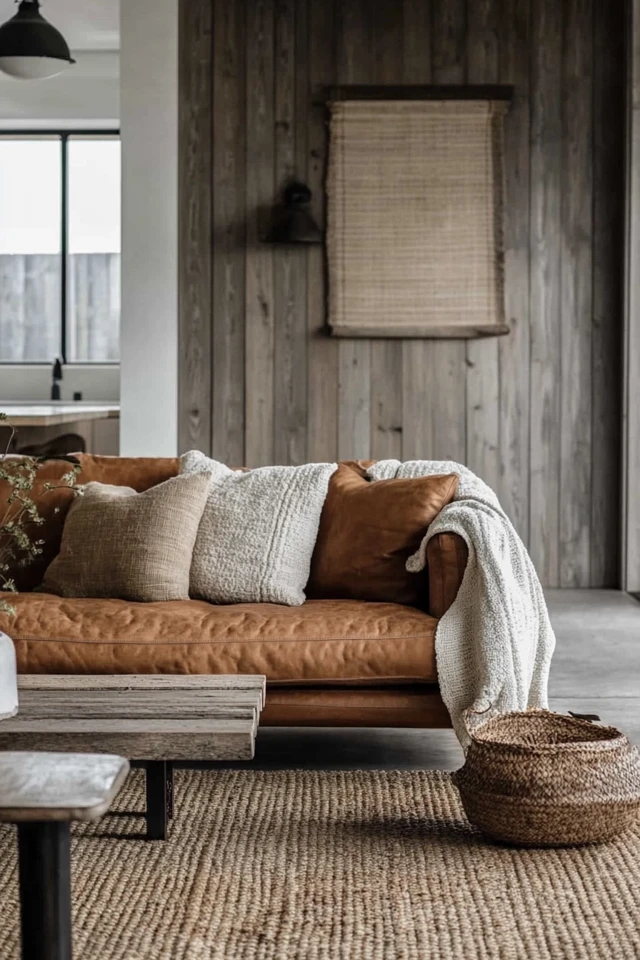

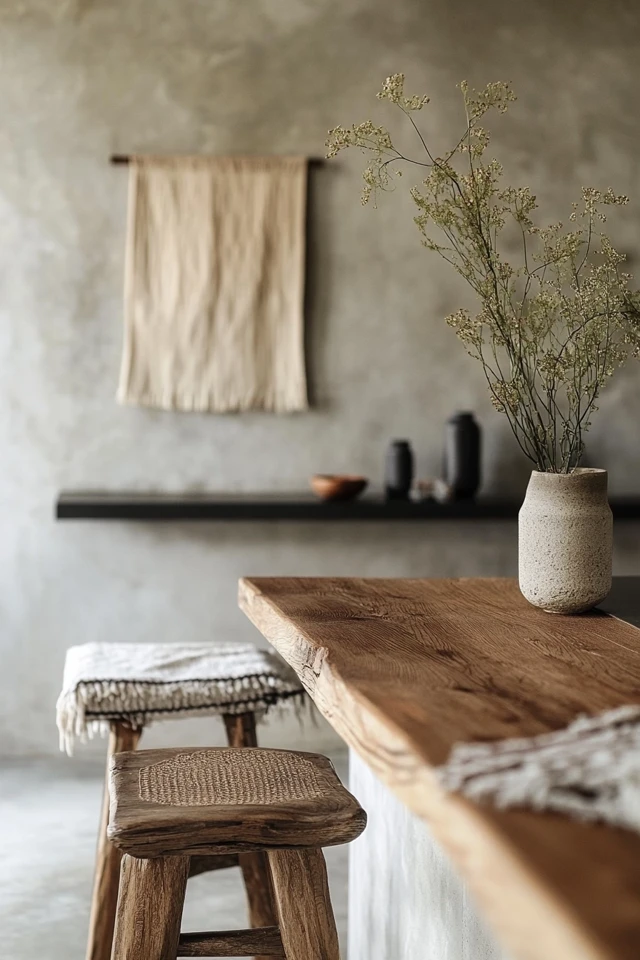
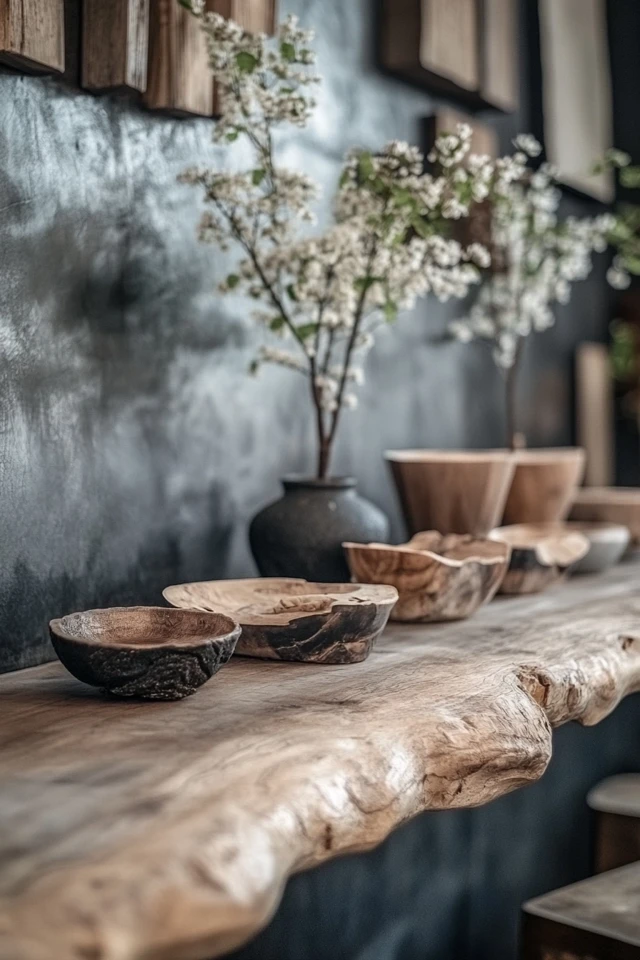
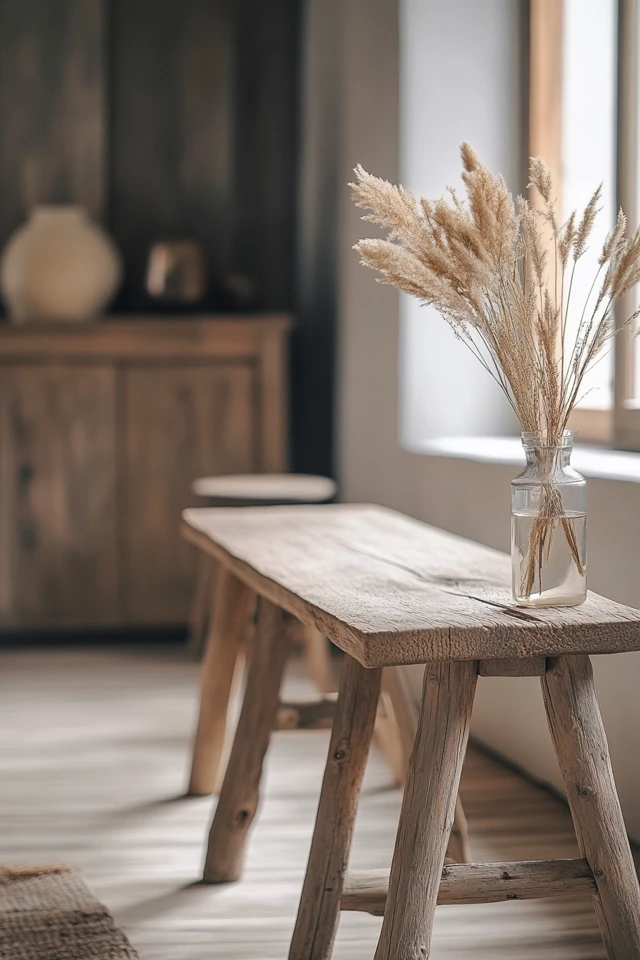
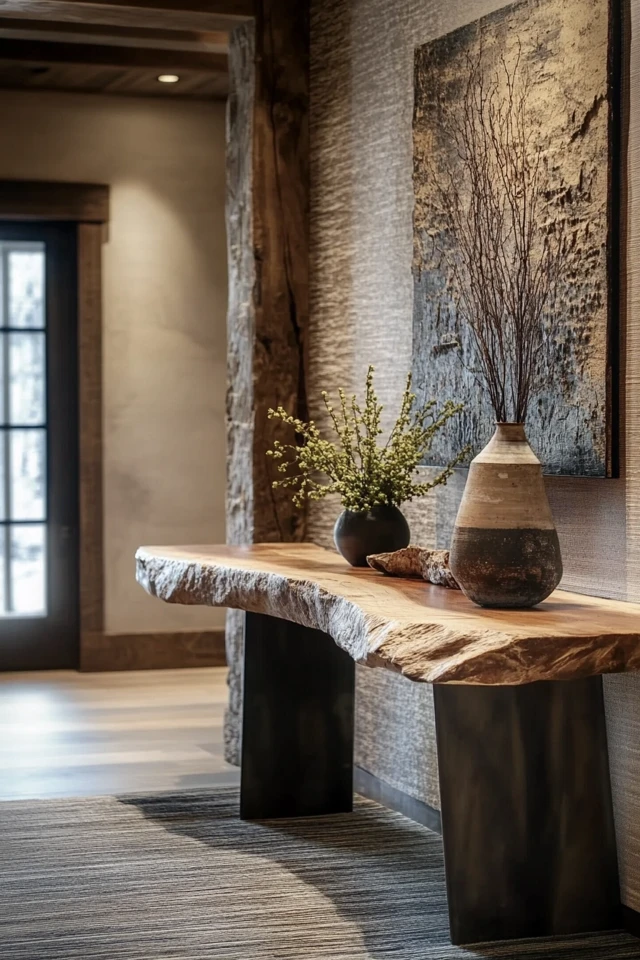
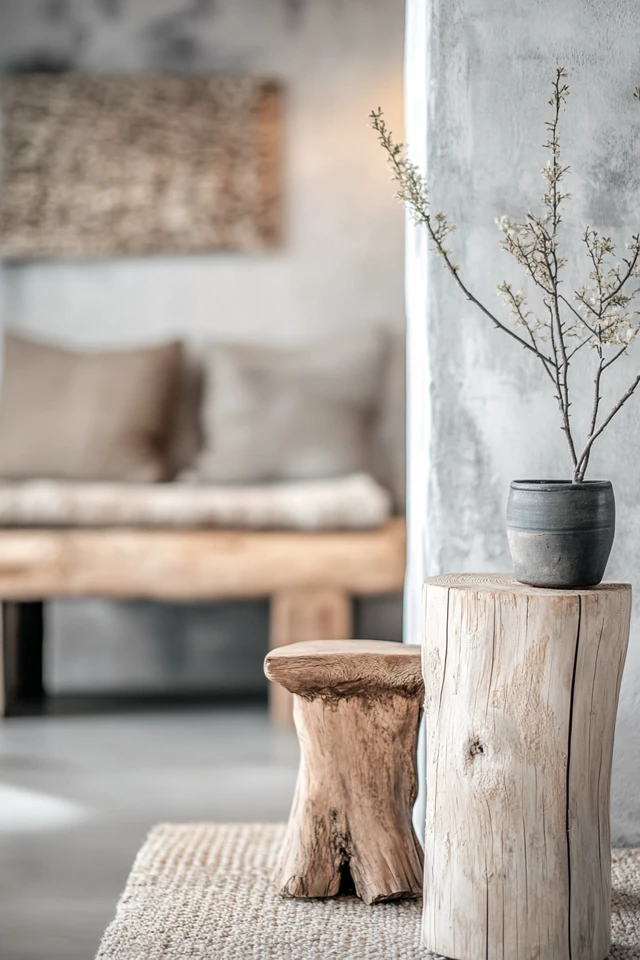
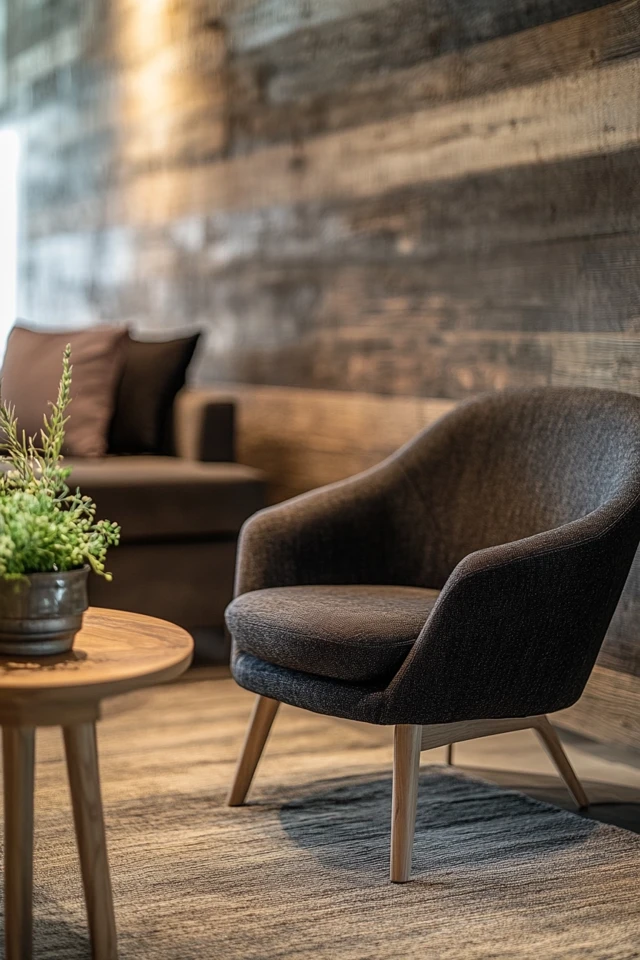
Conclusion
Combining minimalist and rustic styles is all about balance. By embracing natural materials, clean lines, and purposeful decor, you can create a space that feels modern yet warm, simple yet inviting. Whether you’re decorating a cozy living room, a serene bedroom, or even a functional kitchen, the minimalist-rustic aesthetic is versatile and timeless.
Remember, the key is restraint—choose a few standout pieces, focus on quality materials, and let the beauty of simplicity and nature take center stage. With these tips, you’ll master the art of blending these two iconic styles and create a home that’s both chic and comforting.
FAQs
1. What colors work best for minimalist-rustic design?
Neutral tones like white, beige, taupe, gray, and soft brown are ideal. Incorporate darker accents like black or charcoal for contrast.
2. How do I avoid clutter when blending these styles?
Focus on functionality—use only essential decor items and choose storage solutions like woven baskets to keep clutter out of sight.
3. Can I mix modern furniture with rustic elements?
Absolutely! Combine modern furniture with rustic accents like wooden beams, stone decor, or textured textiles for a balanced look.
4. What type of flooring works best for this style?
Wood or wood-look flooring is ideal. For a modern touch, concrete or large neutral tiles can also work well with rustic elements.
5. How can I add warmth to a minimalist space?
Incorporate natural materials like wood, stone, or woven accents, and use warm lighting to create a cozy, inviting atmosphere.

